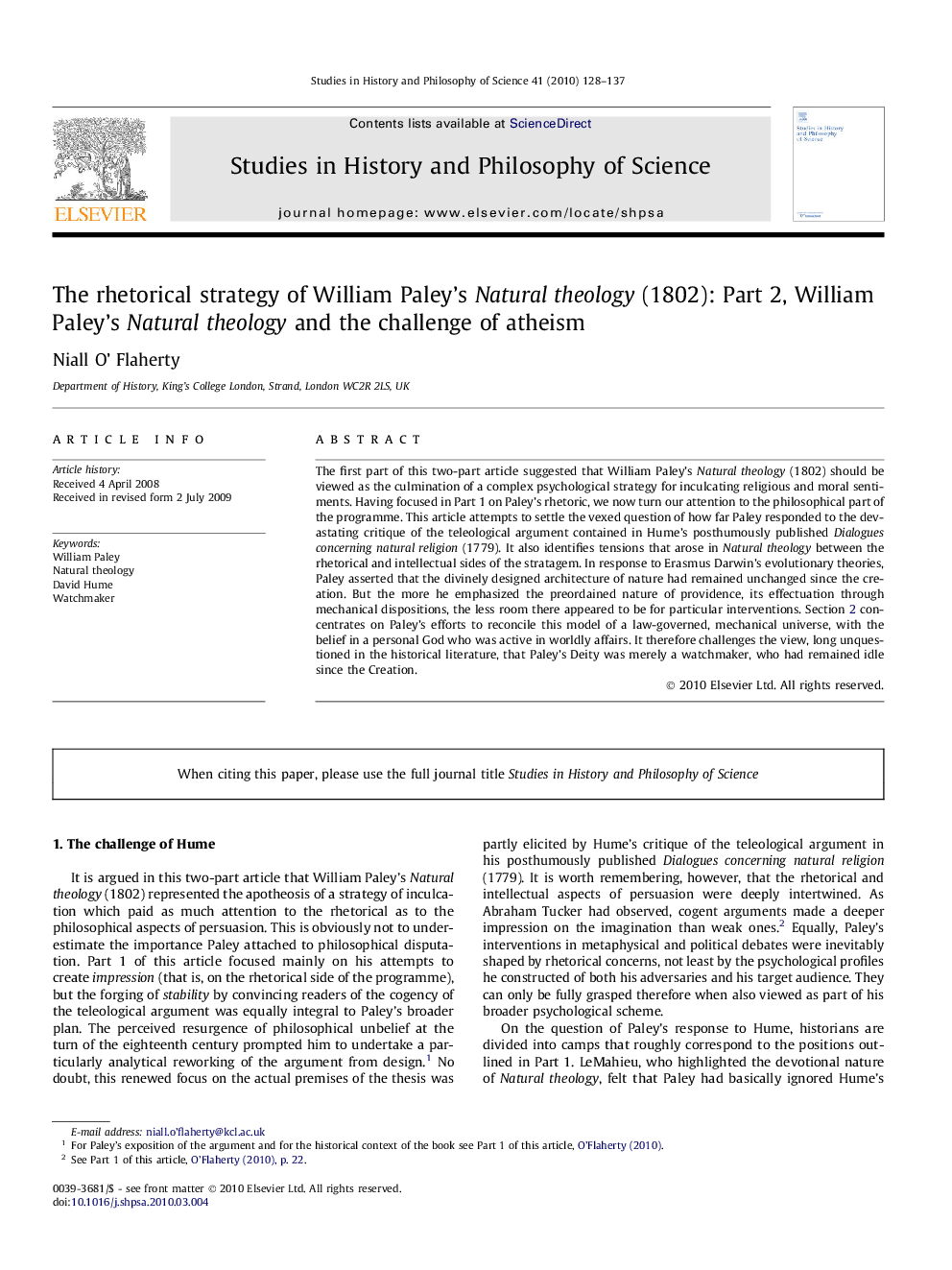| Article ID | Journal | Published Year | Pages | File Type |
|---|---|---|---|---|
| 1160589 | Studies in History and Philosophy of Science Part A | 2010 | 10 Pages |
The first part of this two-part article suggested that William Paley’s Natural theology (1802) should be viewed as the culmination of a complex psychological strategy for inculcating religious and moral sentiments. Having focused in Part 1 on Paley’s rhetoric, we now turn our attention to the philosophical part of the programme. This article attempts to settle the vexed question of how far Paley responded to the devastating critique of the teleological argument contained in Hume’s posthumously published Dialogues concerning natural religion (1779). It also identifies tensions that arose in Natural theology between the rhetorical and intellectual sides of the stratagem. In response to Erasmus Darwin’s evolutionary theories, Paley asserted that the divinely designed architecture of nature had remained unchanged since the creation. But the more he emphasized the preordained nature of providence, its effectuation through mechanical dispositions, the less room there appeared to be for particular interventions. Section 2 concentrates on Paley’s efforts to reconcile this model of a law-governed, mechanical universe, with the belief in a personal God who was active in worldly affairs. It therefore challenges the view, long unquestioned in the historical literature, that Paley’s Deity was merely a watchmaker, who had remained idle since the Creation.
